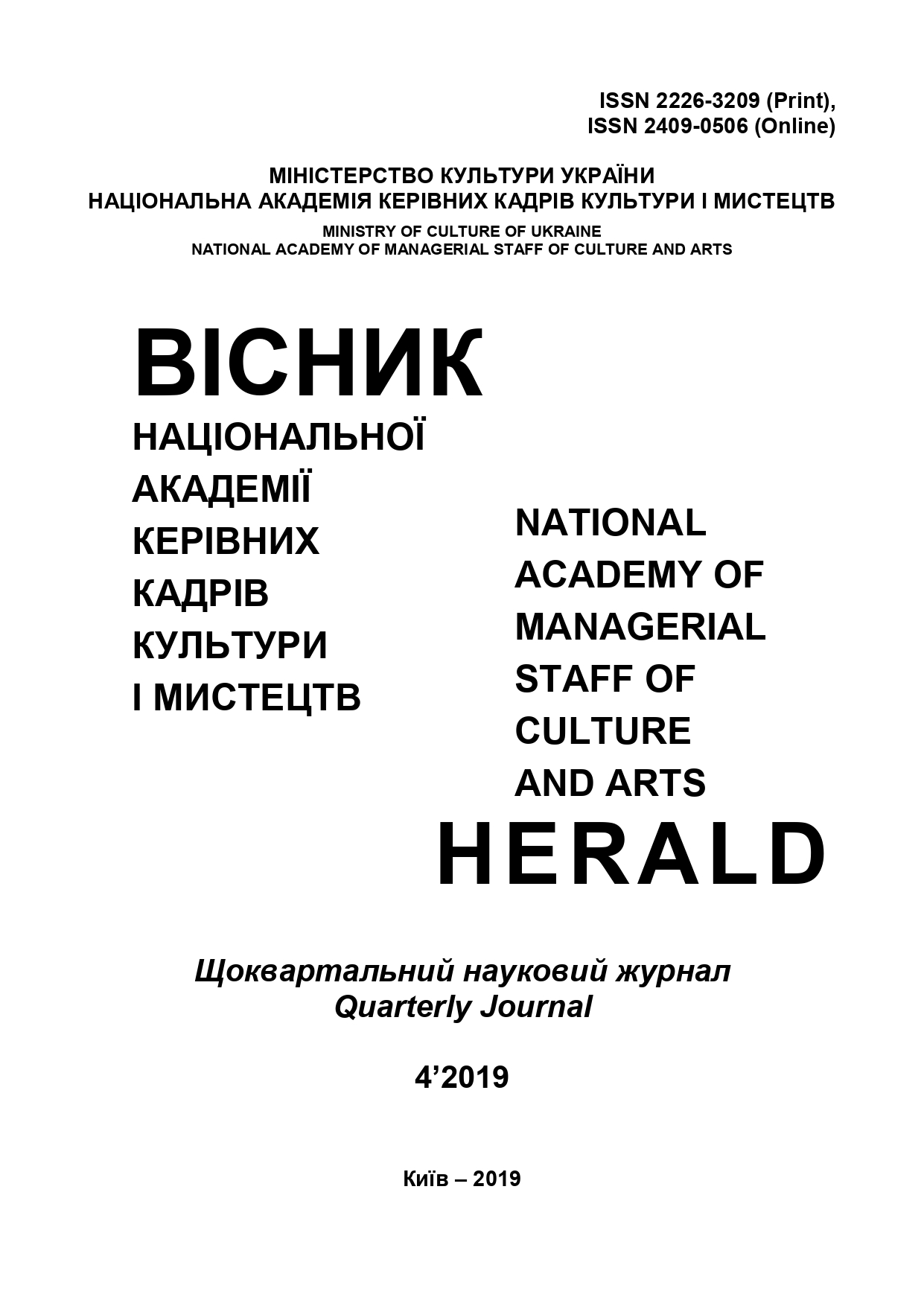Образ автора в кіномистецтві як відображення картини світу. Частина 1. літературний і кіноавтор:перехресний взаємовплив
The image of the author in the cinema as a reflection of the picture of the world. Part 1. Literary and filmmaker: cross-interaction
Author(s): Galina P. PogrebnyakSubject(s): Sociology of Culture, Film / Cinema / Cinematography
Published by: Національна академія керівних кадрів культури і мистецтв
Keywords: author's cinema; author's image; kameo;
Summary/Abstract: The purpose of the article is to identify specific features of the author's image in cinematography and to identify scientific guidelines that will contribute to a comprehensive analysis of the phenomenon of author's cinema. Methodology. In the elaboration of the topic, methods of scientific analysis, comparison, generalization were used. In addition, analytical and systematic methods were used in their unity, which is necessary for studying the art-study aspect of the problem. The scientific novelty is that the problem of the author's image in a cinema in the context of world-view models was the subject of a special study for the first time; the meaning of the notion "image of the author in cinematography" is substantiated as a certain specific integrity and unity of interrelated elements; the directors of the world and domestic cinema are singled out, in the works of which the image of the author is most clearly represented; the expediency of using the biographical dimension, as well as the potential of self-analysis of the artist in the process of author's self-realization, has been proved; the complex analysis was carried out and the specificity of expressive means of presentation of the author's image in various models of cinematographic authorship was revealed. Conclusions. Summarizing, we show that by embodying the verbal image of the film on the screen, the director unites the whole creative group to accomplish common artistic tasks [21,29]. At the same time, the peculiarities of the director-author's worldview, his psycho-emotional peculiarity, may find so-called "materialization" in both audiovisual and verbal series. The materialization of verbal, in particular, is presented in the language of the characters, and on behalf of one of them (not necessarily the main one), a story can be made that clearly expresses the author's position. Familiarity with the materials presented in the article, expands the arsenal of knowledge about the specific character of the author in the cinema art and makes it possible to use them in training courses on the theory and history of cinema and directing.
Journal: Вісник Національної академії керівних кадрів культури і мистецтв
- Issue Year: 2019
- Issue No: 4
- Page Range: 136-142
- Page Count: 7
- Language: Ukrainian

